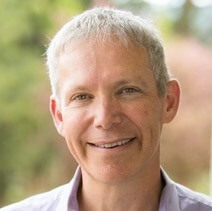Enneagram and The Leadership Circle Profile Case Study:
Bringing the Enneagram Into the LCP into Coaching Engagements
By Beth Ronsick and Paul Wyman
John was a new executive, recently promoted to a vice president role at a large global organization. As part of his transition, he participated in a six-month executive coaching program, which included the Leadership Circle Profile (LCP) 360 assessment tool. Overall, his scores reflected the positive perceptions which got him promoted: Leadership Effectiveness scored in the 75th percentile, and Creative competencies ranged between the 60th to 80th percentiles on both the people and task side of the circle. John’s only Reactive tendency above 30% was Passive, which scored at 79%.
As he and his coach explored these results, John concluded that his Passive score reflected his long-standing dislike of interpersonal conflict, which manifested as a pattern of delaying difficult conversations. The stakes were high for John to change this pattern: he’d been charged with turning around the culture and performance of the struggling division he now led. John knew there were concerns about negative attitudes and behaviors of the front-line supervisors in the division. He committed to his coach that he would engage in whatever conversations and confrontations might be necessary to turn this around, without delay.
John returned to his next coaching session, reporting that he had followed through successfully on his assignment. He had fired one supervisor, and placed two others into his organization’s disciplinary process. He was proud that he had broken through his passivity, and dealt with the conflict courageously. I asked him what changes he had seen in the staff since taking the action. He reported that he hadn’t seen change yet in the morale of the team, but fully expected this to occur in the coming weeks.
Two further coaching sessions passed, and John reported that the team was still performing poorly. Gossip and infighting had not only continued, there was some evidence that it had increased. He was resistant to acknowledging that the problem was not solved, and reluctant to re-engage in further conflict with his supervisors, which he feared would cause it to escalate.
As he explored his own contribution to the troubling situation he found himself in, John reflected, “I don’t know why conflict is so hard for me.” This led to the suggestion that greater self-awareness might be gained from understanding his Enneagram type. He agreed, and his Enneagram assessment showed him to be a Type 9, the “Peacemaker.” Reading a short description of the type, John immediately identified with the profile of the Nine: a positive outlook; a calm and accepting demeanor; a dislike of conflict; and a marked preference for staying comfortable, to the point of complacency.
At the next coaching session, John reported a breakthrough in understanding his passivity. What caused him to delay or avoid conflict was a fear – common to Nines – that giving critical feedback would harm others. Some part of John believed that giving critical feedback would irrevocably harm—and most likely end—a relationship. He saw himself as a nice, positive and kind person, one of the good guys in an otherwise unforgiving, harsh business world. He was definitely not the kind of mean and critical boss who hurts others. The need to preserve his “good guy” identity, and to avoid behaviors he associated with being a bad guy, was driving his leadership behavior.
As well as illuminating the belief that was driving his behavior, the Enneagram also offered John a way to move forward. He was struck by a passage in an Enneagram text which suggested that Nines tend to settle for fake peace – the absence of conflict – rather than pursuing their deeper wish for real peace, the peace that is possible only when hard truths are spoken openly, and a conflict is truly resolved.
Armed with this awareness, John now had a new possibility for action, which had previously been inconceivable. His role as a leader might involve generating MORE conflict, requiring old grievances and resentments to be aired in order to be resolved.
This awareness was the turning point for John’s success in his role. He found the courage to initiate a painful but cathartic dialogue with the leaders in his division, which engaged them as partners in his effort to create a more positive culture.
COMMENTARY
Like many leaders in transition from a Reactive to a Creative orientation, John’s leadership strengths were at risk of being neutralized by an attachment to an old identity as a nice guy who doesn’t hurt others. This emerged in his LCP results as a high Passive score, and a Courageous Authenticity score that was the lowest of all his Creative competencies. John’s LCP scores launched a provocative inquiry into these aspects of his leadership behavior, which was further amplified when he saw his core desire for peace through the lens of his Enneagram type.
The Enneagram is uniquely positioned as a complementary overlay to the LCP 360. The two systems share a focus on seeing beyond behavior, and revealing deeper motives. Many practitioners are drawn to both systems, since both tools illuminate the inner world behind behavior, not just its outward patterns.
When a client’s Enneagram type is explored in tandem with their LCP results, the effect can be like viewing oneself in a series of angled mirrors. For example, we may discover that behind a Type Eight’s high “Controlling” score is a desire to experience their power and vitality as a deflection from feeling vulnerable. A Type Four client with a high “Critical” score may discover a sublimated need to be seen for their own creativity and uniqueness.
Both systems track vertical development. The LCP is targeted at helping clients shift from Reactive to Creative. Authority that was formerly found in the external environment through a role, culture, outside norm, or someone else’s vision evolves to an internalized sense of self that has the maturity and grounding to act both independently and to co-create with others. The Enneagram’s vertical development framework (via the contributions of Don Riso & Russ Hudson) shows how each type can manifest at more or less conscious levels. Its aim is not to place the individual into a box of personality; instead, it asserts that the personality IS the box, and attempts to map a way out of the box of personality in order to sense essential qualities of being that are waiting to emerge. This is particularly helpful in allowing a client to sense the gifts and capacities that are available when the ego loosens its grip.
The Enneagram offers a pathway for growth within type, inviting the prospect that higher levels of leadership and self-actualization are possible without the need for a personality transplant. There’s often a powerful sense of relief and recognition when a client becomes aware of their Enneagram type: a taste of a soul purpose that cannot be separated from its type, and yet cannot be liberated or integrated until one becomes aware of one’s type.
Creative tension is also at play in the activation of both models. In the LCP, our clients feel the pull between current reality and a vision of a desired future. With a coach’s support, they experience the alchemy that results from none other than sitting with the tension and consciously redirecting the inherent discomfort into the vision and outcomes they wish to create. In parallel, for those open to a psychospiritual interpretation of creative tension, the Enneagram can help clients find a practical frame of reference as they navigate the pull between their egoic and spiritual selves. As coaches, we can offer a space of compassion and clarity as our clients witness and metabolize the egoic identity. We can help them validate and learn to trust an expanding state of flow as a domain of conscious leadership.
APPLICATION FOR PRACTITIONERS
- You may wish to introduce the Enneagram into an LCP-based coaching engagement when:
- The language of the LCP does not seem to resonate with your client. The Enneagram can serve as another lens on core beliefs, drivers and attitudes.
- A client is aware of patterns of behavior (constructive or limiting) but they cannot quite grasp what drives them (e.g. “I know I do it, but I don’t know why I do it…”)
- The client has a pattern of low Reactive scores (5% or lower) that suggests some aspect of the self is potentially being “disowned”. These often indicate aspects of the personality which, if expressed, would feel threatening or dangerous to the identity.
- There is a pattern of high Reactive scores that suggest certain strengths or abilities are being held hostage by an attachment to identity.You suspect a client is overusing certain leadership strengths and cannot sense the threshold of diminishing returns (e.g. the achievement-focused Type Three client who wonders, “But isn’t everyone here to get things done?”)
- The client wants to understand the fire in the belly of their soul that underlies key strengths in Creative; an Enneagram type’s hardwired core desires can become the seeds of a leadership legacy
CONCLUSIONS
As practitioners who’ve experimented in bringing the LCP and Enneagram systems together into our client work, we have found the combination to be of greatest service when the leadership stakes are high, and a client’s new way of being requires moving through fear. Our core fears—while illusory—seem to threaten our very survival. Both the Reactive tendencies of the LCP and the habituated patterns of Enneagram type can be seen as strategies for “playing not to lose.”
It also explains why, at the cusp of a breakthrough, lasting change is so difficult to integrate. The egoic identity is at its noisiest and most threatened when faced with its own disillusion. As a practical tool for inflection, having something as distilled as an Enneagram type’s core fear allows the client a (simple, not easy) way to remember and cross-reference what is driving the choices they make.
In John’s case, he needed to stay vigilant to the myriad ways the Nine’s core fear of conflict and disconnection might continuously rebound him into a passivity that would run counter to what was actually needed. There’s no one-and-done solution when it comes to core fears; in John’s case, he couldn’t have a difficult conversation once and think he’d broken through. By continuing to strike a tuning fork of awareness to how core fears drive our clients’ behaviors, we create the foundation for skillfulness and consistency, which are the building blocks of sustainable change.
On the other end of the continuum, the Enneagram’s core desires speak to essential qualities of leadership that effortlessly emerge when we can start to observe our ego doing what it does. In John’s case, greater mastery of type Nine’s core desire for peace emerged as he leaned into conflict and connected with reality. Ironically, he discovered that harmony and stability were only to be found in the engagement with what is actually happening, right now, in the moment. In the present, Nine finds “the peace that passes all understanding” and becomes a force for alert stillness and radical acceptance of reality.
Ultimately, if we wish to elicit transformation in ourselves and our clients that moves our center of gravity beyond Reactive, we must first wrest ourselves free from an attachment to identity—that is—who we take ourselves to be. At the visual center of the LCP graph, we find the word, “Identity,” and we’ve found no better system for helping a leader understand the implication of one’s attachment to identity. An important part of the ongoing work of leadership is to dis-identify with the personality. In doing so, the leadership journey gives way to the spiritual journey. And “Spirit” is at the philosophical center of the Enneagram’s model of personality.
When the two systems are brought into dialogue, a client can awaken to the distinction between what the soul innately longs for and what the identity repeatedly whispers is intrinsic to survival. Together, these systems help us map the way out of what limits us to instead invite our divine, essential nature to flow through us in pure service and contribution.
* * *
Further Reading:
The Enneagram in Business – Ginger Lapid Bogda
Enneagram Assessments
IEQ9 ($23-$120)
Beth Ronsick and Paul Wyman are both LCP practitioners and Enneagram teachers, based in Colorado. They each offer individual consultation for coaches and consultants working with the LCP and Enneagram. A three day, experiential workshop entitled Circles of Wisdom, which explores the intersection of the two systems, is offered annually. Please contact Paul or Beth for further details.







